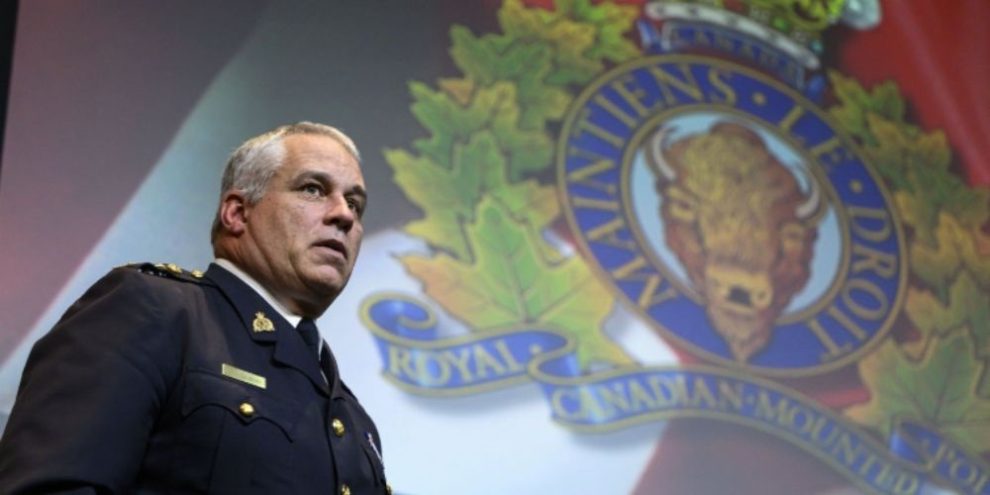
RCMP Commissioner Mike Duheme says a federal move to list organized crime cartels as terrorist entities to fight fentanyl trafficking would give the Mounties more tools to pursue charges and enforce the law.
In an interview Thursday, Duheme also said he sees value in the government's plan to appoint a national fentanyl czar, as it would allow a single point person to see an overall picture of the dangerous drug's manufacture and distribution.
U.S. President Donald Trump has threatened to impose stiff tariffs against Canada, citing the southbound flow of migrants and drugs, including fentanyl.
U.S. border patrol statistics show that less than one per cent of fentanyl seized is found at the northern border.
Trump has agreed to a month-long pause on the tariffs while the U.S. assesses whether Canada's recent actions satisfy his demands.
The federal government unveiled a $1.3-billion plan in December to bolster security and surveillance of the Canada-U.S. border. It announced additional plans this week for a fentanyl czar, new capacity to gather intelligence on transnational organized crime and a move to list drug cartels as terrorist organizations.
The listing process begins with intelligence reports that indicate whether an organization has knowingly carried out, attempted to carry out, participated in or facilitated a terrorist activity.
If the public safety minister believes that threshold has been met, the minister may recommend to the federal cabinet that the organization be added to the list. The listing is then published if the cabinet agrees with the recommendation.
A listed group is not banned and being listed is not a crime — but the designation does effectively freeze a listed group's assets and property, which are also subject to seizure or forfeiture.
"It's an additional tool for law enforcement when we're looking at laying charges," Duheme said.
The term "cartel" might conjure notions of drug lords conspiring in Latin American countries.
Duheme noted a cartel can be defined as a group of independent market participants who collude and agree not to compete with each other.
"You could use the term cartel for any organized crime group," he said. "Because they divvy up the territory, they want to make sure that the market price is the same."
Turf wars happen only when "people are getting too hungry" and want to expand their territory, he said.
"I think there's a lot of outlaw motorcycle gangs that can be qualified as cartels as well," he added.
A recent Criminal Intelligence Service Canada report said organized crime groups involved in manufacturing fentanyl operate mostly in British Columbia and Ontario. Beyond those provinces, crime groups engage in distribution and trafficking, and increasingly rely on street gangs and outlaw motorcycle gangs, the report said.
Public Safety Minister David McGuinty was asked Thursday whether the planned terrorist listings could include outlaw motorcycle gangs.
"We'll have more to say about that listing process and who's on that list in due course," he said.
Duheme indicated the Privy Council Office was still working to define the fentanyl czar's role.
But he suggested the czar would gather information from the RCMP and other agencies to provide the prime minister and cabinet with an overall sense of "everything that's going on in Canada when it comes to fentanyl."
McGuinty said Thursday the terms of reference for the new position would be finalized soon.
"The fentanyl czar's role will be to help us integrate what is a whole-of-society challenge," he said.
"Fentanyl is a foreign affairs issue. It's a law enforcement issue. It's an intelligence issue. It's a public health issue. It's a tracing issue in terms of the ingredients that end up being used in the production of fentanyl, the precursors."
— With a file from Nick Murray
This report by The Canadian Press was first published Feb. 6, 2025.





